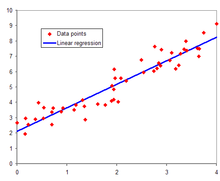User:Al83tito/Stats
MGTECON 603: Econometrics (Part II)
Hypothesis Testing[edit]
Introduction[edit]

Lorem ipsum dolor sit amet, consectetur adipiscing elit, sed do eiusmod tempor incididunt ut labore et dolore magna aliqua. Ut enim ad minim veniam, quis nostrud exercitation ullamco laboris nisi ut aliquip ex ea commodo consequat. Duis aute irure dolor in reprehenderit in voluptate velit esse cillum dolore eu fugiat nulla pariatur. Excepteur sint occaecat cupidatat non proident, sunt in culpa qui officia deserunt mollit anim id est laborum.
| Truth/Decision | H0 | H1 |
|---|---|---|
| H0 | × | Type I error |
| H1 | Type II error | × |
Critical Value and Test Statistic[edit]
Type I/II Errors; Power Function[edit]
Type I error: the rejection of a true null hypothesis
Type II error: retaining a null hypothesis when it’s false.
Remark: fix the H0 and H1 first, then discuss what the type I/II errors are. i.e. the errors are relative.
- Whether a small significant level is desired: If the consequences of a type I error are serious or expensive, then a very small significance level is appropriate; e.g. Two drugs are being compared for effectiveness in treating the same condition. Drug 1 is very affordable, but Drug 2 is extremely expensive. The null hypothesis is ”both drugs are equally effective,” and the alternate is ”Drug 2 is more effective than Drug 1.” In this situation, a Type I error would be deciding that Drug 2 is more effective, when in fact it is no better than Drug 1, but would cost the patient much more money. That would be undesirable from the patient’s perspective, so a small significance level is warranted (reference: “common statistical errors”, Martha Smith (UT Austin)).
- The trade-off between two types of errors:
- The general approach (in the textbook but not taught here) is in “statistical decision theory” (S.8.3.5).
- Neyman approach: Choose a critical value s.t. P
θ(type I errors) is “small”, ∀θ ∈ Θ
0. - typically “at most 5%”: truncating data - e.g. 6% is thrown away.
- “P-hacking”: Once take a rule, we need to prolong the rule regardless the results - for example, we cannot push the p-value slowly by changing experiment parameters. (more on “prolonging the rule”: medical trials?)
Power Function: The power function of a test with a critical region C is the function β :
- Θ → [0, 1] given by β(θ) = P
θ((X
1, ..., X
n)′ ∈ C) = P
θ(reject H
0), θ ∈ Θ. - – P
θ(type 1 error) = β(θ),∀θ ∈ Θ
0.- (i.e. Given H
0 is true the probability of rejecting it)
- (i.e. Given H
- – P
θ(type 2 error)=1−β(θ),∀θ∈Θ
1.- (i.e. Given H
1 is true the probability of accepting H
0)
- (i.e. Given H
- Θ → [0, 1] given by β(θ) = P
Extended content
|
|---|
| ipsum dolor sit amet, consectetur adipiscing elit, sed do eiusmod tempor incididunt ut labore et dolore magna aliqua. Ut enim ad minim veniam, quis nostrud exercitation ullamco laboris nisi ut aliquip ex ea commodo consequat. Duis aute irure dolor in reprehenderit in voluptate velit esse cillum dolore eu fugiat nulla pariatur. Excepteur sint occaecat cupidatat non proident, sunt in culpa qui officia deserunt mollit anim id est laborum. |
Test Statistics[edit]
Lorem ipsum dolor sit amet, consectetur adipiscing elit, sed do eiusmod tempor incididunt ut labore et dolore magna aliqua. Ut enim ad minim veniam, quis nostrud exercitation ullamco laboris nisi ut aliquip ex ea commodo consequat. Duis aute irure dolor in reprehenderit in voluptate velit esse cillum dolore eu fugiat nulla pariatur. Excepteur sint occaecat cupidatat non proident, sunt in culpa qui officia deserunt mollit anim id est laborum.
Hypothesis Testing[edit]
Lorem ipsum dolor sit amet, consectetur adipiscing elit, sed do eiusmod tempor incididunt ut labore et dolore magna aliqua. Ut enim ad minim veniam, quis nostrud exercitation ullamco laboris nisi ut aliquip ex ea commodo consequat. Duis aute irure dolor in reprehenderit in voluptate velit esse cillum dolore eu fugiat nulla pariatur. Excepteur sint occaecat cupidatat non proident, sunt in culpa qui officia deserunt mollit anim id est laborum.
